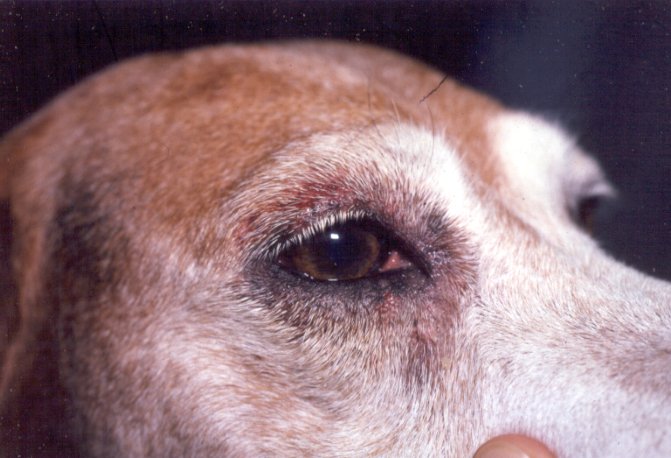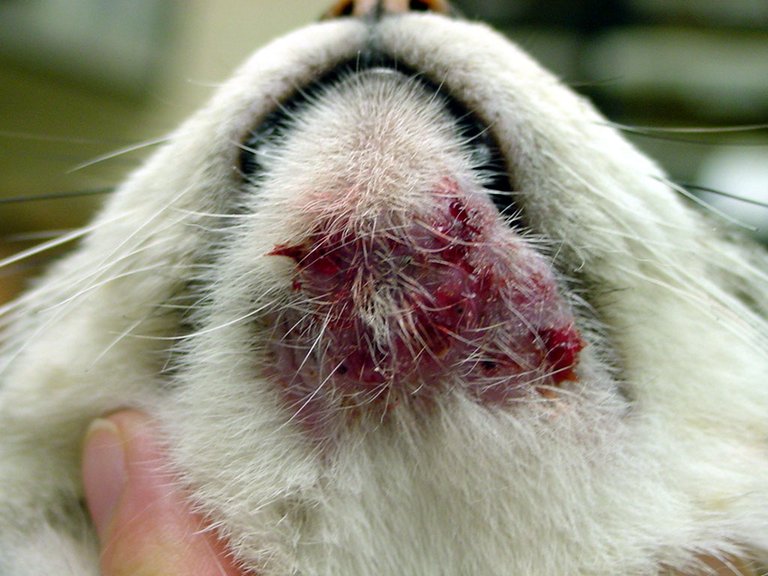Animals can clot excessively, this disorder in animals is called "hypercoagulable states', which could result in blocked arteries. Let me quickly describe hemostasis, which is a process set in motion to stop bleeding when bleeding happens to any organ or body part.
For hemostasis to work, there is an adequate requirement of several platelets, the appropriate amount of blood clotting proteins, and blood vessels that constrict appropriately. During injury, the wall of the blood vessel would break.

Source
A responsive blood vessel would narrow and permit the flow of blood more slowly, permitting the process of clotting to begin. Platelets risk as well to a broken wall where the platelet's shape is changed by protein from round to spiny, this would help them stick to the blood cells, broken vessel wall, and each other.
Other proteins form long strands called fibrin, the strands of the fibrin form a net that traps and helps hold together the platelets and blood cells, creating a clot that plugs the break-in the wall vessel. After the formed clot has been stabilized, other proteins would then stop the clotting process and dissolve eventually after the clot.

Source
Bleeding disorders can happen at birth, or later during the life process. The presence of defects in blood clotting proteins often presents itself as delayed bleeding and bruising deep in tissues, bleeding into joints or other body cavities.
A platelet with a defect would show up as superficial small bruises, nose bleeding, black stool that is sponsored by bleeding into the bowels, or prolonged bleeding at the site of infection and surgery.
Hypercoagulable states can happen as a result of inherited disorders of clotting proteins, or they can be acquired. Cases of acquired clotting disease are more common in animals than other existing inherited disorders.
When proteins are deficient, bleeding disorders are expected, and congenital clotting protein disorders are present during birth, in the case of serious deficiency or defect of clotting proteins, signs would begin to show at an early stage.
Severe defect cases are also very deadly, In this situation, animals affected may either be still worn or die shortly after birth, in a case of severe defects, it is often a deadly situation where animals may be stillborn or even die shortly after birth. The lack of clotting proteins or vitamin K in a newborn animal could worsen the clotting defect.
If the amount of a particular clotting protein is up to 5-10 percent normal, then the newborn may survive, but would surely show signs of illness before they become 6 months of age.

Source
Most cases of clotting protein disorders that are present at birth in domestic animals are often defects of a single protein. During this phase, numerous routine procedures are carried out including declaw removal, vaccination, neutering or spraying, and it is during this time that bleeding tendency is noticed.
**Hemophilia A (Factor VIII deficiency) happens to be the most commonly inherited bleeding disorder, especially in cats. Cats affected may show prolonged bleeding even after a successful surgery or even after an injury. It is often difficult to confirm the presence of this condition in an animal less than 6 months old, and this is because their livers may not have produced sufficient clotting proteins. The treatment of this condition would require repeated transfusions of whole blood or plasma until it gets to the point when bleeding has been controlled.
Hemophilia B (Factor IX deficiency) is a less common one compared with hemophilia A. It has been reported in several breeds of dogs with females usually bringing the carriers and rarely showing signs of the disease, when signs are shown, they are similar to those of hemophilia A.
Acquired Clotting Proteins Disorders: Most clotting proteins are produced in the liver, this means the liver disease could result in a decreased level of clotting proteins, especially Factord VII, IX, X, and XI, including proteins that break up clots.
When the liver disease becomes very severe, it can also result in x condition called, disseminated intravascular coagulation. A dog that accidentally consumed rat poison for instance may have clotting problems because the poison consumed would reduce the liver's production of clotting proteins.

Source
Acquired Thrombocytopenia is most common amongst dogs, with several causes being identified, the most common one being the immune system destroying platelets.
Congenital Thrombocytopenia: Gray Collies could develop a disorder known as cyclic hematopoiesis, which is characterized by a 12-day cycle during which every blood cell type decreases, including platelets.
These are to mention but a few, but a blood clotting test is one good way that help experts identify animals that have effective clotting proteins in them. However the tests are not highly sensitive, so the animal affected needs to have a serious deficiency for the test to figure out the problem.
Of course, treating this disorder would vary based on the diagnosis. If a pet has a decreased platelet count, then there could be a need for platelet transfusion. Dogs with anemia may need a cell transfusion whether it's a whole blood or packed red blood cell type.
References
msdvetmanual.com/circulatory-system/hemostatic-disorders/
small-animal-vet/teaching-and-research
Thanks for your contribution to the STEMsocial community. Feel free to join us on discord to get to know the rest of us!
Please consider delegating to the @stemsocial account (85% of the curation rewards are returned).
You may also include @stemsocial as a beneficiary of the rewards of this post to get a stronger support.